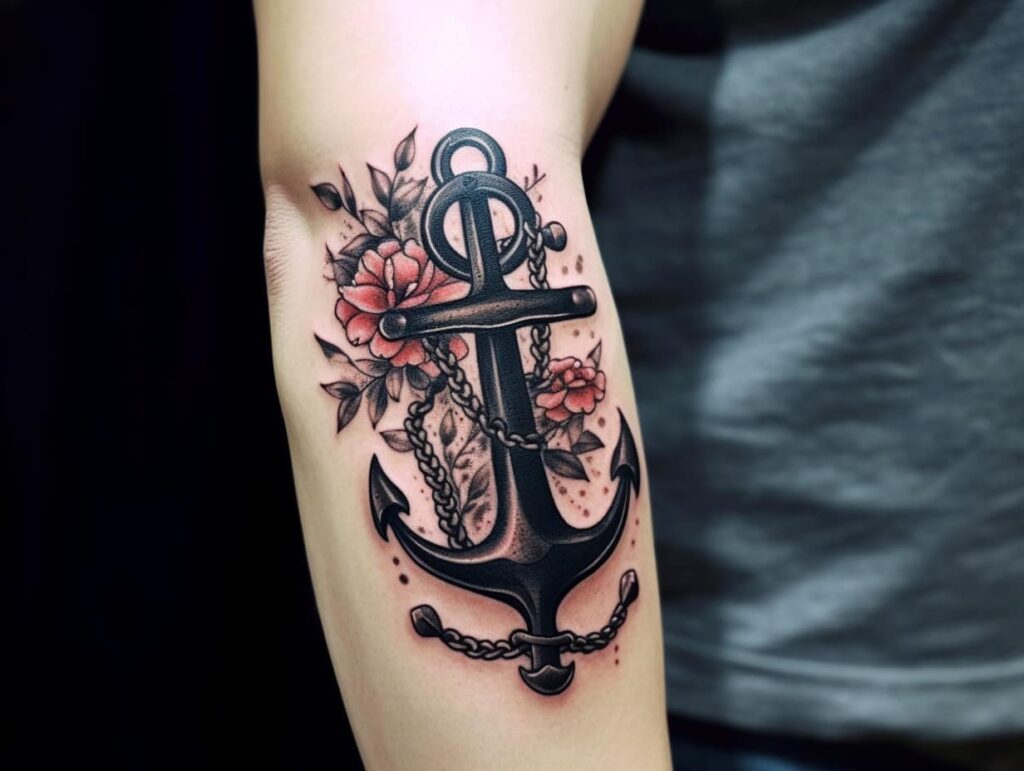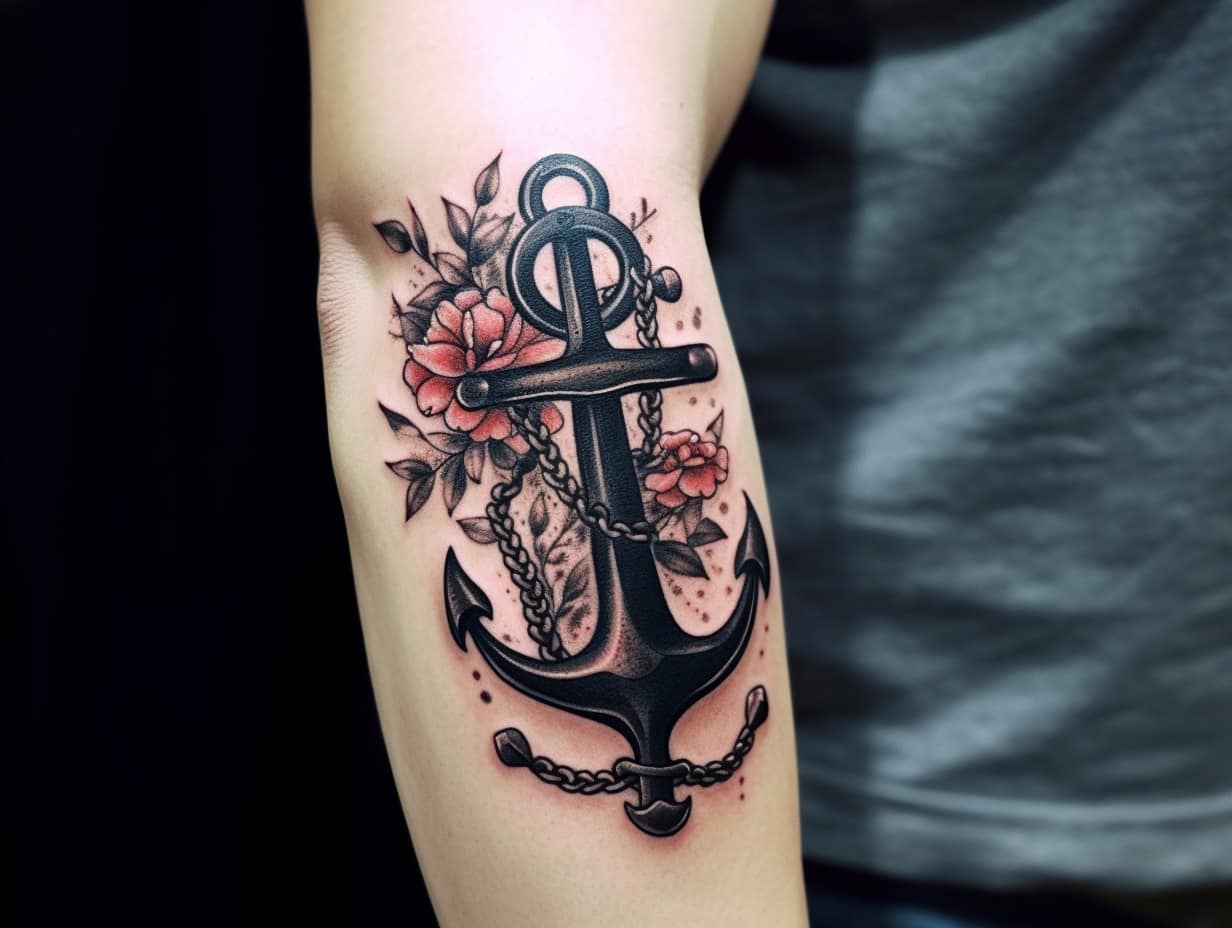
Decoding the Deep: The Traditional Anchor Tattoo Meaning Explained
The traditional anchor tattoo is more than just a nautical symbol; it’s a powerful emblem steeped in history, maritime tradition, and deeply personal meaning. For centuries, the anchor has represented stability, hope, and steadfastness, making it a popular choice for sailors, members of the armed forces, and anyone seeking a symbol of grounding in their lives. Understanding the traditional anchor tattoo meaning requires delving into its rich past and exploring the various interpretations associated with this enduring design.
A History Rooted in the Sea
The anchor’s significance predates tattoos themselves. As a crucial tool for seafaring vessels, the anchor has been a symbol of safety and security for millennia. Ancient civilizations, including the Greeks and Romans, used anchors as symbols of hope and perseverance. Early Christians even adopted the anchor as a disguised cross during times of persecution, further cementing its association with faith and resilience.
The rise of maritime culture in the 18th and 19th centuries solidified the anchor’s place in tattoo history. Sailors, often facing perilous journeys and long separations from home, sought permanent reminders of their connection to the sea and the values it represented. The traditional anchor tattoo became a badge of honor, signifying experience, skill, and a deep respect for the ocean’s power. The meaning of the traditional anchor tattoo was clear: a steadfast spirit in the face of adversity.
Symbolism and Interpretations of the Traditional Anchor Tattoo
While the core meaning of the traditional anchor tattoo revolves around stability and security, its symbolism extends far beyond the literal function of the anchor itself. Here are some key interpretations:
- Stability and Grounding: The anchor’s primary function is to hold a ship in place, providing stability amidst turbulent waters. As a tattoo, it represents a person’s ability to remain grounded and steadfast in the face of life’s challenges.
- Hope and Salvation: In stormy seas, the anchor is a symbol of hope, offering the promise of safe harbor. The traditional anchor tattoo meaning can therefore represent hope during difficult times and a belief in a brighter future.
- Loyalty and Devotion: Sailors often get anchor tattoos to symbolize their loyalty to their ship, their crew, or their home port. It can also represent loyalty to a loved one or a deeply held belief.
- Strength and Resilience: Enduring the hardships of a life at sea requires immense strength and resilience. The anchor embodies these qualities, representing the wearer’s ability to overcome obstacles and persevere through adversity.
- Peace and Tranquility: The anchor can also symbolize a desire for peace and tranquility, a yearning for a safe haven from the storms of life. The traditional anchor tattoo can represent the finding of inner peace.
Common Traditional Anchor Tattoo Designs
The traditional anchor tattoo typically features a classic, stylized design, often incorporating other nautical elements. Some common variations include:
- Anchor with Rope: The rope wrapped around the anchor adds another layer of symbolism, representing the connection between the sailor and their ship.
- Anchor with Banner: A banner displaying a name, date, or motto is a popular addition, personalizing the tattoo and adding a specific meaning.
- Anchor with Heart: This combination symbolizes love, loyalty, and devotion, often representing a loved one waiting at home.
- Anchor with Eagle: Often seen in military tattoos, the anchor with an eagle represents patriotism, service, and dedication to one’s country.
- Broken Anchor: A broken anchor can symbolize a loss, a failure, or a difficult experience. However, it can also represent overcoming adversity and finding strength in the face of hardship.
The Enduring Appeal of the Traditional Anchor Tattoo
Despite evolving tattoo trends, the traditional anchor tattoo remains a timeless and popular choice. Its enduring appeal lies in its powerful symbolism, its connection to maritime history, and its ability to convey a deep sense of personal meaning. Whether you’re a seasoned sailor, a member of the armed forces, or simply someone seeking a symbol of stability and hope, the traditional anchor tattoo meaning resonates with a wide range of individuals.
The placement of the traditional anchor tattoo also contributes to its significance. Common locations include the forearm, bicep, chest, and back. The choice of location often reflects the wearer’s personal connection to the symbol and the message they wish to convey.
Choosing the Right Anchor Tattoo Design
When considering a traditional anchor tattoo, it’s important to choose a design that resonates with your personal values and experiences. Consider the various elements and symbols that can be incorporated into the design, and think about the message you want to convey. Consult with a skilled tattoo artist who specializes in traditional designs to ensure that your tattoo is executed with precision and artistry.
Beyond the aesthetic appeal, understanding the traditional anchor tattoo meaning is crucial. It’s not just about getting a cool design; it’s about embracing the symbolism and incorporating it into your own personal narrative. The anchor tattoo should be a reflection of your inner strength, your resilience, and your unwavering hope for the future.
Modern Interpretations and Variations
While the traditional anchor tattoo adheres to classic designs and symbolism, modern interpretations often incorporate contemporary styles and artistic techniques. Some artists experiment with different color palettes, geometric patterns, and abstract elements to create unique and personalized anchor tattoos. However, the core meaning of the traditional anchor tattoo – stability, hope, and resilience – remains intact.
The traditional anchor tattoo continues to evolve, adapting to the changing times while preserving its timeless appeal. Whether you choose a classic design or a modern variation, the anchor tattoo remains a powerful symbol of grounding and perseverance. [See also: Nautical Star Tattoo Meaning] [See also: Compass Tattoo Symbolism]
Caring for Your Anchor Tattoo
Proper aftercare is essential to ensure that your traditional anchor tattoo heals properly and retains its vibrancy. Follow your tattoo artist’s instructions carefully, keeping the area clean and moisturized. Avoid excessive sun exposure, which can fade the colors and damage the skin. With proper care, your anchor tattoo will remain a lasting reminder of your strength, resilience, and unwavering hope.
The Anchor Tattoo in Popular Culture
The traditional anchor tattoo has also made its mark in popular culture, appearing in movies, television shows, and music videos. It’s often associated with rebellious characters, seafaring adventurers, and individuals who embody a strong sense of independence. This further solidifies the anchor tattoo’s status as a symbol of strength, resilience, and unwavering spirit. The meaning of the traditional anchor tattoo extends beyond the individual, becoming a cultural symbol of steadfastness.
Conclusion: A Symbol of Enduring Strength
The traditional anchor tattoo is more than just ink on skin; it’s a powerful symbol with a rich history and a profound meaning. It represents stability, hope, loyalty, and resilience – qualities that resonate with people from all walks of life. Whether you’re drawn to its nautical heritage, its spiritual symbolism, or its aesthetic appeal, the traditional anchor tattoo is a timeless reminder of the strength within us all. So, the next time you see someone sporting an anchor tattoo, remember the deep and meaningful story it tells – a story of perseverance, hope, and unwavering faith in the face of life’s storms. The traditional anchor tattoo meaning is truly timeless.

